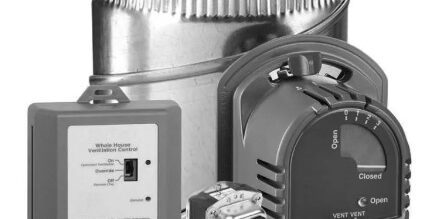What is a fresh air ventilation system? It is a system that pulls fresh air into the home summer and winter through an outside vent that is connected to your central heat & air system.
It seems that fresh air ventilation(FAV) systems have been required in Frisco, Texas since 2001. Frisco began to require FAV in residential construction when voters approved residential builders to meet the Energy Star Certification. Presently, all cities in Texas have adopted to meet energy construction codes set by IECC since 2016.
A FAV system consists of one independent fresh air duct, a computer, and an electronically powered damper that opens and closes. The system is designed to draw in fresh air from outside the home for approximately two hours each twenty-four hour period. The reason for this device is that new home envelopes are airtight, preventing energy loss through air leakage. Air inside the home will become stale if windows and doors are never opened. The FAV system makes sure that fresh air is introduced to keep the indoor environment healthy.
I recently had a conversation with an HVAC contractor who has been extremely busy servicing air conditioning units during the recent heat wave. This technician shared that he has been instructing clients to turn off their FAV System component during extreme heat and extreme cold conditions. The majority of these systems operate for approximately two hours daily and they do not recognize temperature extremes outdoors.
So, this winter, if you are wondering why there is a particularly cold draft through the air supply system, it is likely that the fresh air ventilation is running.

The most common system I come across is this Honeywell unit. These are the components of the FAV system.
Some of the more expensive FAVS have an air filter inside the unit that will need to be cleaned annually and cleaned more frequently when there is construction in the neighborhood.
The controls look like one of these mounted to the top HVAC system.



This is a Broan 180-P FAV stand alone unit that has a filter inside. There are several different manufactured FAV systems now.


A dirty fresh air intake vent at the exterior of the home.

Newer homes (2005 and newer) started to implement Energy Star and other energy saving certifications making homes airtight. This meant that homes do not breathe, they no longer leak air or let air in around doors, windows, outlets, and penetrations through the exterior walls or ceilings.
IECC International Energy Conservation Code
For more video information on this topic, open Youtube.com and insert the following words in the subject line. You will find a video showing the Honeywell equipment and an explanation from B J Poznecki. regarding the energy lost during extreme weather periods. He has created a simple explanatory video.





